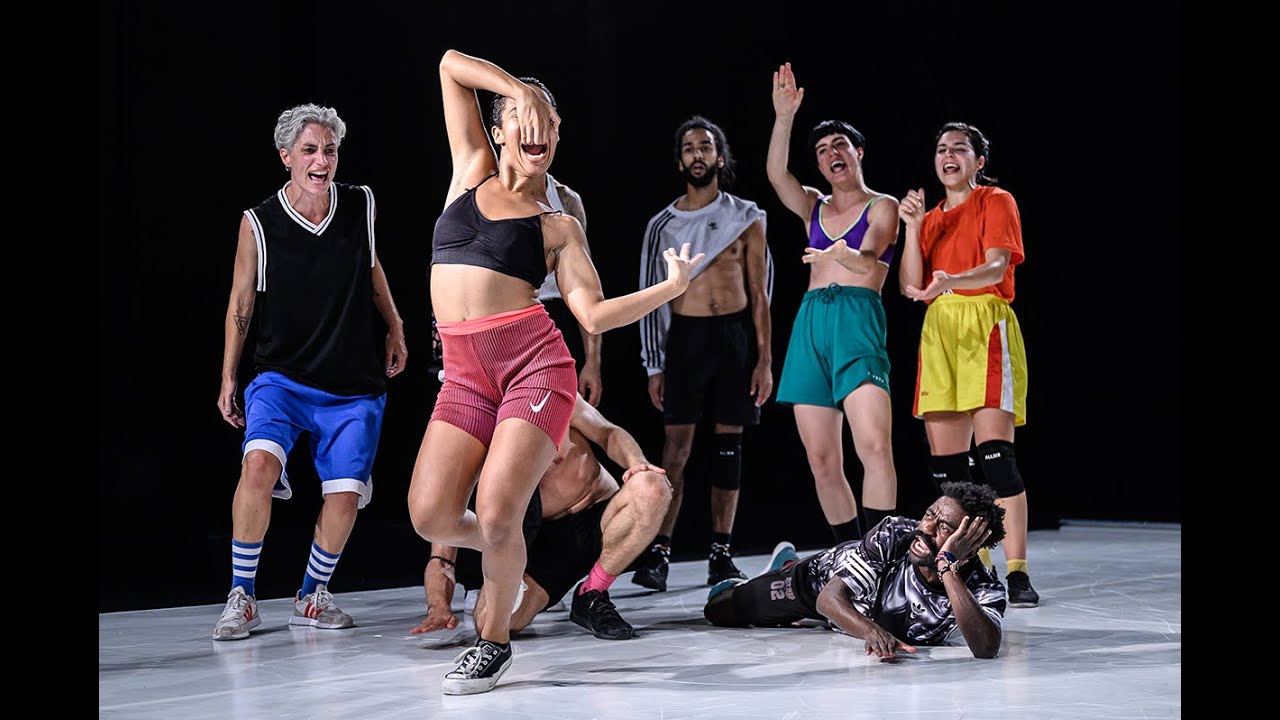… And some contrast, comparisons and observations… A Folia (“Folly”) by Marco da Silva Ferreira, performed by Ballet de Lorraine, premiered with Petter Jacobsson and Thomas Caley’s Instantly Forever on the same stage on Thursday 7 March at the Opéra national de Lorraine, place Stanislas, Nancy, France.
Breathing hard and a little too excited at the end of da Silva Ferreira’s stimulating handiwork, I wanted to call the CaleyJacobssondaSilvaFerreira program a “diptych”.
After all, Jacobsson and Caley chose to invite da Silva Ferreira to Nancy and asked the popular almost hip-hopchoreographer to create a Folia specially for the company they’ve been leading for more than a decade.
But “diptych” would imply “complementarity”, sharing something more than a stage. Or suggest that the same topography of sense is explored, maybe, or, maybe that the same style of approach to movement art is in play.
But the experience of the two dance performances is very different and whatever complementarities my friends at the Nancy ballet might feel, spectator experience is the bottom line. No?
The remarkable reflective black stage floor is shared, for instance. At first look, it seems complementary, but just isn’t. Its choreographic, visual use is too different. For Instantly Forever, it’s a multiplying mirror on a wheeling merry-go-round as against the inviting glitter of a universal urban-dance dancefloor, à la Michele Murray’s Dancefloor, also created for Ballet de Lorraine and premiered in April 2023.
Also, in general, the dominant visual quality of Instantly Forever is saturation, gives a sense of in media res; a Folia is resolutely the sum of its people.
A Folia’s movement is choreographed in the frame of urban dance (hip hop). Urban dance starts as energy and shapes it into dance. Instantly Forever is choreographed in a (free) frame of modern and contemporary dance. Modern and contemporary dance create then shape energy. A spectator feels that difference and the sensibilities that it induces.
Typical in urban dance, the men and women of A Folia scintillate as they gradually fill their dramatic space with loose groups, larger, smaller, individuals. As the men and women find their places in the one large, also loose, group that has taken shape, they become performers – those for whom dance is “performance”, a shaping of their energy as a relationship, I mean.
The rest of da Silva Ferreira’s a Folia choreography also presents pretty much the same as in any urban dance piece: energetic, often duo-ing or coupling or gathering affinity groups, shaping and molding each other, finding unisson (being together). Within unisson, one by one, champions come forward to battle – where a performer shows their moves and interested on-lookers choose “winners” (but not “losers”). For more on urban dance convention, see B.girl, choreographer, member of the jury: Valentine Nagata-Ramos on evaluating Olympic break dance.
Da Silva Ferreira’s singular attractiveness as an urban dance choreographer is an ability to ignore genre even as he shapes performers and spectators alike around its conventions. In a Folia, as he explains in his notes, he wants to see what ecstasy does and where it gets to (“a folia” (“folly”) refers to acculturated ecstasy dance in Medieval Portugal). In other words, and I’m exaggerating to make the point, if da Silva Ferreira feels he needs to chain together a Krump foot-stomp, a Pina Bausch melodramatic sub-mime and a surprisingly precise grand jété to show out what he wants to show out, he’ll do it.
An entrancing solo – a real, live New York City Ballet-style solo – by Céline Shoefs in the midst of a Folia’s kaleidoscope of sets of forms of touching and supporting and showing off underlines my point. No Swan – not Anna Pavlova, not Pedro Pauwels & cie and etc… – ever died with as much spirit in the thing – or as many great moves. En pointe, pirouettes, throw downs and pure expression, elegant and abrupt, assured and modest, Shoefs brings everyone to unisson with her parade. Wonderful work by her.
And, another Da Silva Ferreira attractive singularity: while the energy and performance-focus involved in, for instance, a tour de force such as Shoefs’ solo, most often comes out as athletic and power in urban dance performance, Ferreira’s hand turns it erotic. Shoefs solo goes beyond affirming her own qualities, goes beyond battle, she happens, preludesencounter.
A Folia’s soundtrack, da Silva Ferreira explains in the program notes, is an iteration of the Early Modern and now pretty universally shared chord progression called “La Folia” or “Folly”, which, as “a Folia” in Portuguese is also ritual ecstasy and carnival-like sexual turnabout.
The performance’s musical arrangement in effect has electronic musician Luis Pestana “deejaying” Arcangelo Corelli’s Violin Sonata in D minor La Folia, Op. 5 N°12 by. Pestana’s sounds first push performers and spectators along with a beat that laps at the vibratory edge of techno-club style heart-defibrillation before embracing all in a stimulating beat from beginning to end of the show. Marco da Silva Ferreira is trying to write urban dance into a History of Dance while in its generated sensibility and references Jacobsson and Caley’s Instantly Forever is about history and the experience and perception of history, small h.
And, all this being said, the experience of a Folia left me feeling dizzy-damn good.
So, Bob’s your uncle. When a Folia’s up against Instantly Forever “contrast” best fits the bill.
Dance performers, Ballet de Lorraine
Jonathan Archambault, Aline Aubert, Alexis Baudinet, Malou Bendrimia, Alexis Bourbeau, Charles Dalerci, Inès Depauw, Mila Endeweld, Angela Falk, Nathan Gracia, Inès Hadj-Rabah, Tristan Ihne, Matéo Lagière, Laure Lescoffy, Valérie Ly-Cuong, Andoni Martinez, Afonso Massano, Lorenzo Mattioli, Clarisse Mialet, Elsa Raymond, Elisa Rouchon, Céline Schoefs, Gabin Schoendorf, Lexane Turc, Luc Verbitzky, Mac Twining
Go to Source
Author: Paul Tracy DANISON

